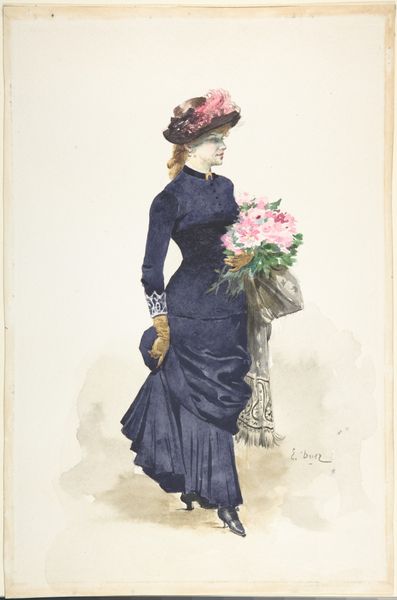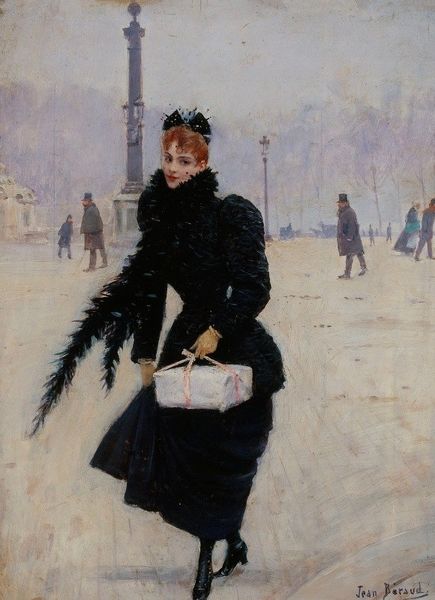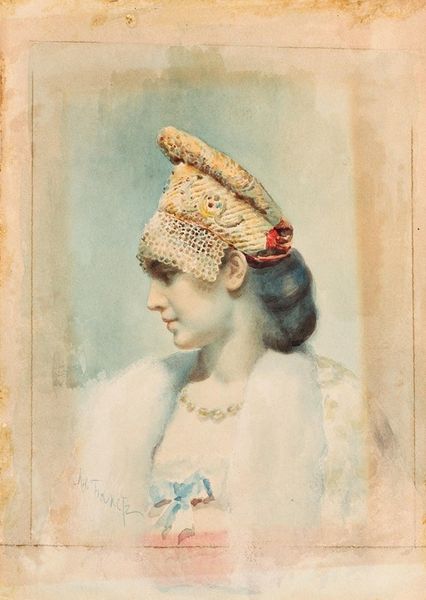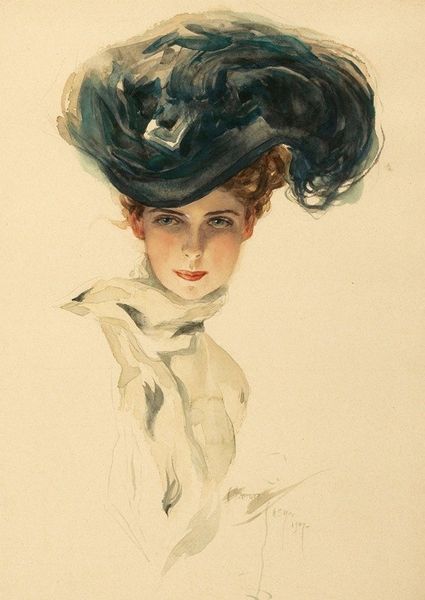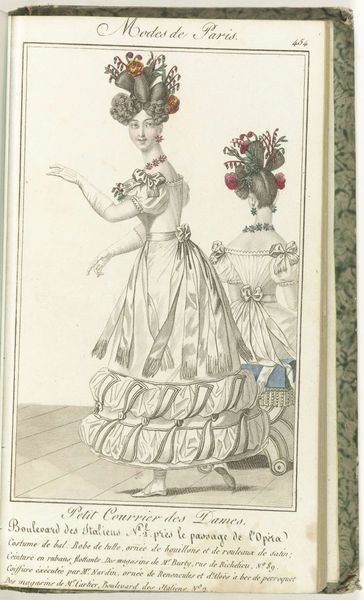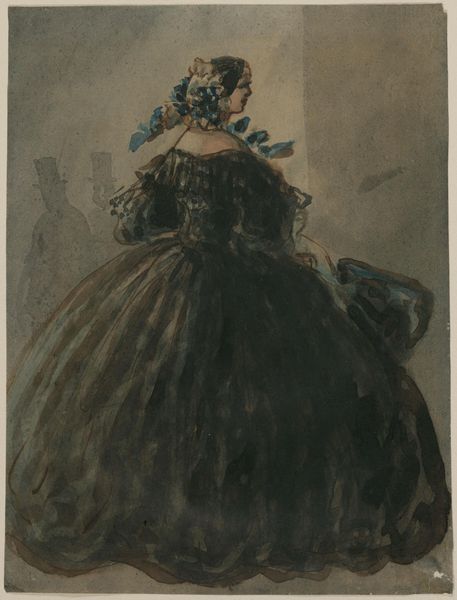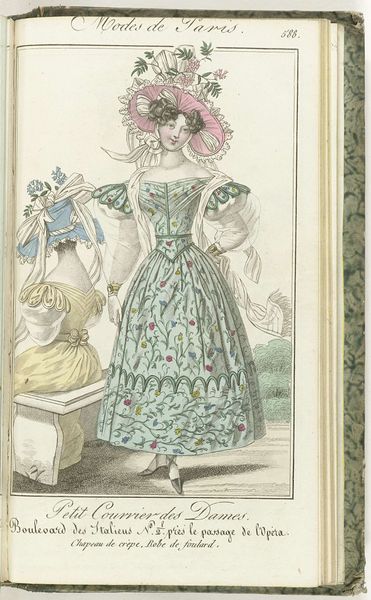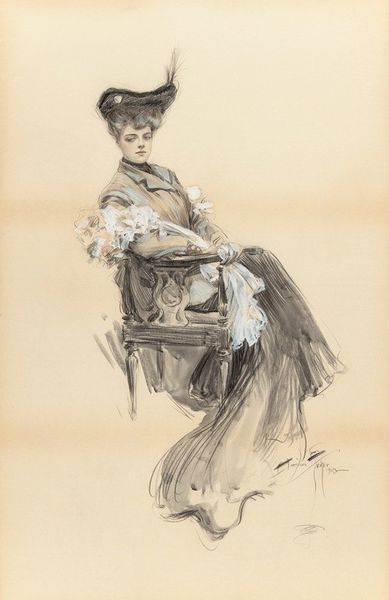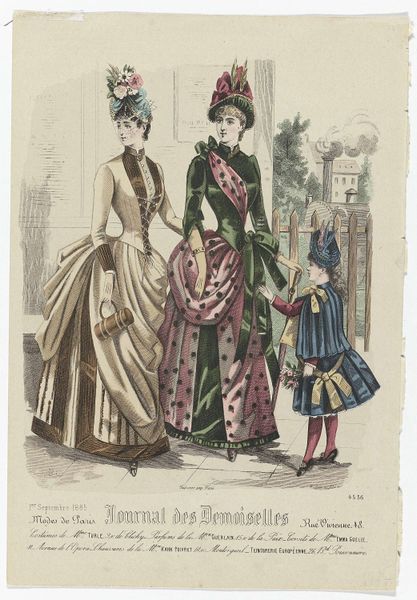
Copyright: Public domain
Editor: We’re looking at Louise Abbéma’s "Matin d’avril," painted in 1894. It's watercolor, and depicts a woman with flowers in a public square. There’s a certain gentle elegance to it; everything feels very composed. How do you interpret this work? Curator: Well, let's start with the material Abbéma chose: watercolor. It was readily accessible, relatively inexpensive compared to oils, and crucially, seen as a 'feminine' medium. Now, who had access to it, and what did it allow them to produce and consume? Editor: Are you saying the choice of watercolor was a deliberate statement about access and gendered expectations? Curator: Precisely! And look at her subject. While clearly upper class, she isn't staged within a private interior, but a public, urban space. How does that challenge or conform to the expected roles of women artists and subjects in that era? Editor: That's fascinating. It's a really nice juxtaposition, almost rebellious in a subtle way. So, even seemingly 'minor' choices reflect on broader social and economic realities. Curator: Absolutely. And beyond gender, think of the very process: the fleeting moment captured, the way watercolor demands speed and precision. It mirrors the era's increasing pace of industrial production and consumption. Every mark holds that tension. Editor: I hadn't considered the speed aspect. So, we can read into Abbéma's process reflections of not just artistic choices, but of the changing labor landscape and class too. Curator: Precisely! By examining materials and context, we decode power, production, and participation within society, questioning the accepted hierarchies of art. Editor: It’s been interesting to see the bigger picture around process, class, and production in this painting. Curator: Indeed, paying attention to those elements brings another dimension of understanding this artist.
Comments
No comments
Be the first to comment and join the conversation on the ultimate creative platform.
